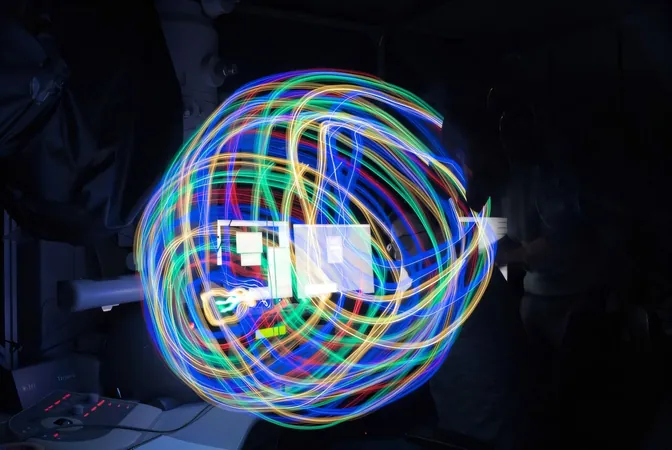
Revolutionizing High-Resolution Microscopy: How Quantum Optics May Change the Game
2024-12-09
Author: Nur
Imagine being able to look at the intricate structures of a virus at the atomic level, or observing proteins as they fold without damaging them. This dream could become a reality thanks to groundbreaking research by a team led by Philipp Haslinger at TU Wien, who are combining the power of quantum optics with traditional electron microscopy.
A Historic Leap in Microscopy
The journey of microscopy began nearly a century ago when Louis de Broglie proposed that electrons, like light, have wave properties. By 1927, researchers Davisson and Germer provided experimental validation of this theory. Building on these foundations, engineers Ernst Ruska and Max Knoll constructed the first electron microscope, enabling scientists to see objects smaller than what light could reveal. This marked the beginning of a new era in the field of microscopy.
The Quantum Electron Microscope: A New Frontier
Philipp Haslinger describes electron microscopy as “a crazy, cool technique” that could allow researchers to observe biological processes at an atomic scale. However, high-energy electrons often destroy delicate samples, making live observation nearly impossible. This challenge has prompted Haslinger and his 11-member team to seek new methods to obtain more information with fewer electrons, paving the way for what they term "quantum electron microscopy."
At the heart of their innovation lies a concept known as “quantum ghost imaging,” based on the Zou-Wang-Mandel effect. Essentially, this method employs entangled electron-photon pairs to create an image. When an electron traverses a transparent medium, it generates a photon. As the photon is entangled with the electron, it can be used to measure the electron's interactions with the sample, allowing an image to be reconstructed without directly damaging it.
Overcoming Technical Challenges
Despite the promise of this approach, the team faces significant technical hurdles. Traditional electron microscopes are sealed to prevent light interference, but Haslinger’s team has modified their equipment, allowing photons to escape for measurement. While they are still in the early stages, they are optimistic about proving the concept—Haslinger has noted that they have already recorded a ghost image, a significant milestone in their research.
Potential Impacts on Biology and Materials Science
If successful, this innovative technique could revolutionize various fields. For battery research, it may facilitate real-time observation of molecular and atomic changes during charging and discharging, leading to discoveries of optimized materials. In biology, researchers might finally be able to witness protein folding in action without damaging the sample, unlocking deeper insights into cellular processes.
“Watching life as it happens, that would be a dream,” Haslinger reflects. His interest in quantum optics was ignited two decades ago during lectures by the renowned physicist Anton Zeilinger. Now, Hel and his colleagues are on the brink of potentially reshaping electron microscopy as we know it.
The Future is Bright
As developments in quantum electron microscopy unfold, we may very well be on the verge of a seismic shift in how we observe the microscopic world. The implications for science are vast, from enhanced biological studies to improved materials research. With every step taken, Haslinger and his team not only aim to honor the legacy of pioneering scientists but also to set new standards in the field, blending history with innovation for a challenging yet exciting future.





 Brasil (PT)
Brasil (PT)
 Canada (EN)
Canada (EN)
 Chile (ES)
Chile (ES)
 España (ES)
España (ES)
 France (FR)
France (FR)
 Hong Kong (EN)
Hong Kong (EN)
 Italia (IT)
Italia (IT)
 日本 (JA)
日本 (JA)
 Magyarország (HU)
Magyarország (HU)
 Norge (NO)
Norge (NO)
 Polska (PL)
Polska (PL)
 Schweiz (DE)
Schweiz (DE)
 Singapore (EN)
Singapore (EN)
 Sverige (SV)
Sverige (SV)
 Suomi (FI)
Suomi (FI)
 Türkiye (TR)
Türkiye (TR)